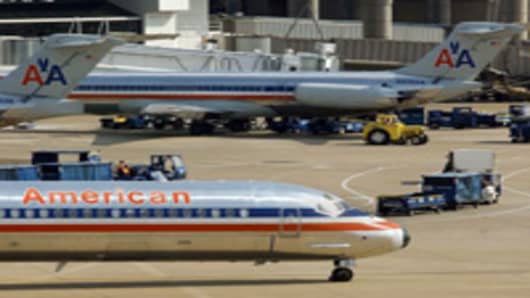AMR, parent company of American Airlines, was halted four or five times this morning (Tuesday). The reason (personnel changes, disappointing November traffic) is really not as material as the fact of the trading halts.
AMR is in the Russell 1000, a basket of the 1,000 largest stocks in the U.S. All the stocks in the Russell 1000 are governed by one single stock trading rule: a five-minute trading pause if the transaction price of the security moves ten percent or more from a price in the preceding five-minute period.
Of course, this is absurd with a stock like AMR, which was $0.50 and can easily move $0.05 (10 percent) very quickly.
What should be done? One obvious choice is to change the single stock circuit breakers, including for the Russell 1000. Modify them for low-priced stocks.
This plan already exists for stocks outside the Russell 1000. Stocks that are outside the Russell 1000 trade under a different trading halt, depending on price: price moves required to trigger a trading pause are 30 percent or more for stocks priced at $1 or higher, and 50 percent or more for such securities priced less than $1.
This makes more sense. So AMR at $0.50 would have to move $0.25 (50 percent) under this rule.
A second — and likely — possibility is that they implement new limit up/limit down rules, which allows stocks — low priced or not — to move within bands, rather than being halted. So, for example, if a stock drops 10 percent, it can continue to trade in a band above 10 percent down, but not below it. This reduces the need to constantly keep halting stocks.
The SEC is considering this, and will likely implement it some time in the second quarter.
_____________________________
Bookmark CNBC Data Pages:
_____________________________
Want updates whenever a Trader Talk blog is filed? Follow me on Twitter: twitter.com/BobPisani.
Questions? Comments? tradertalk@cnbc.com



